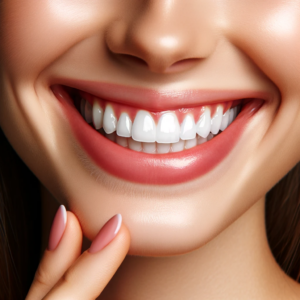
In this blog we will look at the different ways to keep the ‘respiratory’ airway open, so as to prevent mild sleep apnea and snoring.
The two most commonly used types of oral appliances:
1. Tongue Retaining Devices
2. Mandibular Advancing Devices.
Let’s look at both of these.
1) Tongue Retaining Device (T.R.D):
A suction cup is placed on the tip of the tongue which pulls the tongue forward.
The back of the tongue is prevented from collapsing and blocking the airway while asleep.
How Does This Work?
An ‘anterior bulb’ holds onto the tip of the tongue with a suction type of action. This suction works as a negative pressure on the tip of the tongue.
The Disadvantages of T.R.D’s:
• Though effective for mild sleep apnea, they are not helpful for individuals with moderate to severe Obstructive Sleep Apnea (O.S.A).
• Difficult for patients to wear on a regular basis.
• A problem for patients who cannot breathe through their nose.
• Irritate the tip of the tongue over time.
This appliance is good for patients with:
• Few or no teeth.
• Large tongues.
• Patients who cannot advance their lower jaw. This will be explained as you read on.
2) Mandibular Repositioning Appliance:
These are also known as Mandibular Advancing Devices (M.A.D.)
This appliance repositions the lower jaw forward. It maintains the lower jaw in a protruded position during sleep.
How does this work?
The tongue is pulled forward along with the soft tissues at the back of the throat. This causes the muscles of the tongue to become more active and rigid at the same time.
The appliance fits over the upper and lower teeth.
This appliance is good for patients with:
• A healthy and normally functioning T.M.J. The lower jaw is pulled forward, so if there are existing T.M.J. problems, this may interfere with being able to tolerate the appliance.
• A reasonable amount of teeth, which are in good condition and supported by healthy gums…proper anchorage is required in order to support the appliance.
As opposed to T.R.D’s, M.A.Ds are:
• More effective at treating mild sleep apnea and snoring.
• Easy for patients to get used to and wear regularly.
• Not a problem for mouth breathers I.e. those who cannot breathe through their nose.
I. Surgery:
This is to eliminate excess tissue in the soft palate, uvula and tongue.
II. Lifestyle Changes:
Better sleep, hygiene, exercise and weight loss may all work together to improve your actual breathing; basically, try to improve all aspects of your life for balance and wellness.
Conclusion
Mandibular retaining devices are much more popular than the tongue retaining devices. They are also more successful at treating mild sleep apnea and snoring.
In the next blog, we’ll look at the advantages and disadvantages of the Intra oral appliances discussed here…sleep well everyone!
Yours in good health,
Dr. F. Keshavarz Dentistry







